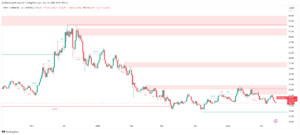
The blockchain has faced a sharp decline in network usage and transaction fees, a rough patch for Ethereum.
In Q1 2025, Ethereum’s transaction fees fell by roughly 60%, totaling just $208 million by early April—its lowest level since 2020. This drop is mainly caused by the increasing adoption of Layer-2 (L2) scaling solutions, such as Coinbase’s Base, which processes over 80 transactions per second.
Moreover, the Dencun upgrade has played a key role in reducing the cost of transactions, leading to a diversion in activity away from Ethereum’s main network.
As a result, Ethereum’s average transaction fee has also declined greatly, falling to $0.31 as of April 8, 2025, down from over $1 a year earlier. This reduction in fees is proof of Ethereum’s ongoing struggle to maintain its position following the growing popularity of L2 networks.
The movement of transactions to these networks continues to put pressure on Ethereum’s core blockchain, which faces increasing competition from new technologies.
Declining Price and Market Position Strain
In addition to the fee reduction, Ethereum’s price has also faced a drastic decline. In Q1 2025, Ether’s price dropped by approximately 45%, marking the worst first-quarter performance since 2022.

This decline has caused Ethereum to underperform compared to Bitcoin, with the ETH/BTC ratio hitting a five-year low. Analysts have pointed out that Ether has beaten Bitcoin on only 15% of trading days since 2015, which indicates a continuous fight to maintain its market share.
Despite the price drop, Ethereum whales have seized the opportunity to increase their holdings, with over 130,000 ETH being purchased in recent weeks. These investors see the price decline as a potential buying opportunity.
However, general market sentiment remains cautious, particularly due to external factors such as the announcement of new trade tariffs under the Trump administration, which has contributed to increased volatility in the global financial markets.
The combination of declining transaction fees, reduced network activity, and the drop in Ethereum’s price has increased the challenges the blockchain faces in maintaining its dominance.
With the continued rise of Layer-2 solutions and other scalability improvements, Ethereum will need to innovate and address its scalability issues in order to maintain a competitive edge in the fast-growing blockchain landscape.

The post Ethereum Faces Major Challenges Following Declining Transaction Fees and Market Struggles appeared first on ETHNews.


